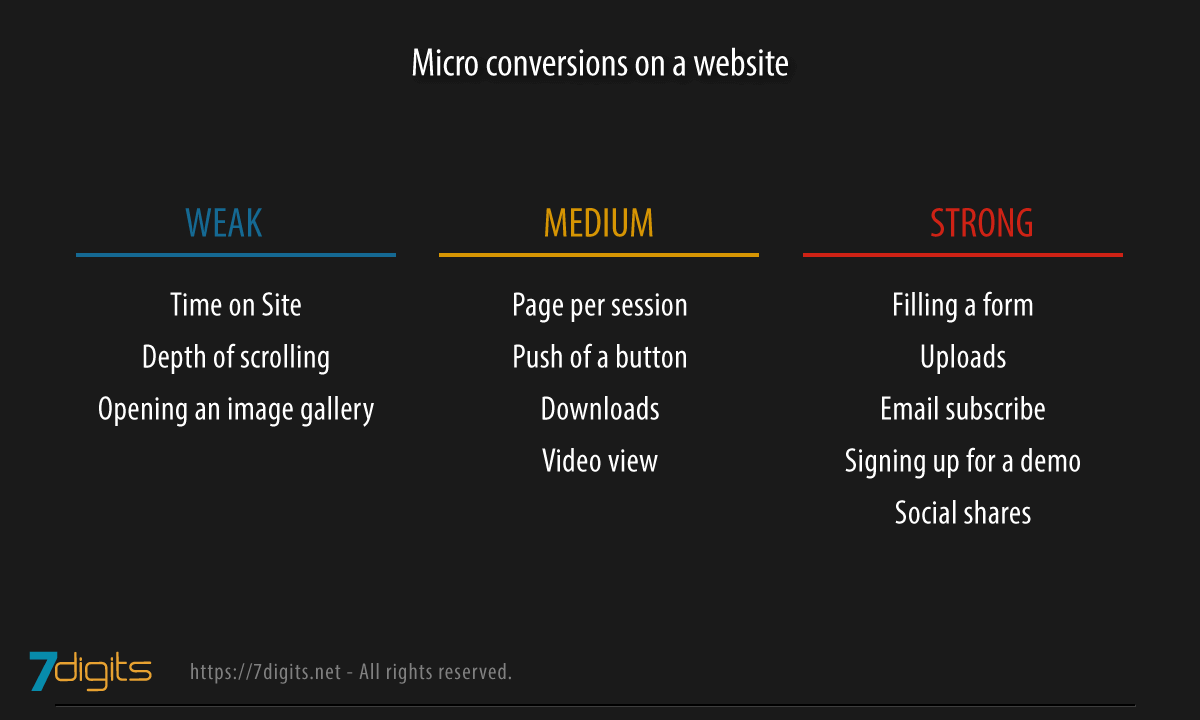


Smaller types of engagement are important stepping stones used by people prior to making macro-conversions, and they can be useful indicators of a potential customer's interest in your product or service.įor example, if someone reads a couple of articles on your blog before signing up for your blog's weekly newsletter, that person is showing an interest, which could lead to a sale in the future.

How can tracking micro-conversations benefit you? 1. Micro-conversions come with a lot of benefits that can improve your overall conversion rate-and, therefore, your bottom line. Instead, they should figure out the value their audience is looking for. It's a part of the process it can't be eliminated, so businesses shouldn't try to eliminate it. Just because visitors don't convert into actual customers the first time they land on your website doesn't mean the traffic is worthless. Micro-conversions nudge your audience forward in your funnel to achieve your primary goal, which is the macro-conversion. That's why, if you focus only on your primary goal, you'll miss out on many opportunities. Macro-conversions are arguably more important because they correlate directly with revenue, but they're not the only meaningful events taking place on your site.Ĭustomers typically complete multiple micro-conversions before they reach a point where they are comfortable making a purchase. Now that you know what micro-conversions are, it's time to take a look at why they are so important, and how monitoring them can have a massive impact on your business. The following image summarizes the differences between micro- and macro-conversions:
Macro vs micro conversions drivers#
Here is an example of a micro-conversion in action from Grubhub when the company tries to get Grubhub drivers to sign up. The common factor between these seemingly different goals is that each macro-conversion has an impact on the business's profits-either immediately, or very soon after.Ī micro-conversion, on the other hand, is a smaller type of engagement that is a stepping stone toward a macro-conversion, such as signing up for a newsletter, watching a video, or downloading a whitepaper.īasically, it's any activity that takes place on the customer's journey to a macro-conversion. Affiliate sites: Clicking a sponsored link.Content websites: Signing up for an email newsletter.
Macro vs micro conversions full#
Here is an example of a macro-conversion in action from Movavi, a video editing software provider.Īs you can see, the company's goal for the homepage is to get individual visitors or organizations to download its software for free, which creates leads that Movavi will later pitch the full product to.Ĭhoosing the right macro-conversions depends on the industry you're in. For a software provider, however, a macro-conversion might be a solid lead, such as a request for a demo or quote. For an e-commerce retailer, a macro-conversion is the conversion of a visitor into a paying customer.


 0 kommentar(er)
0 kommentar(er)
